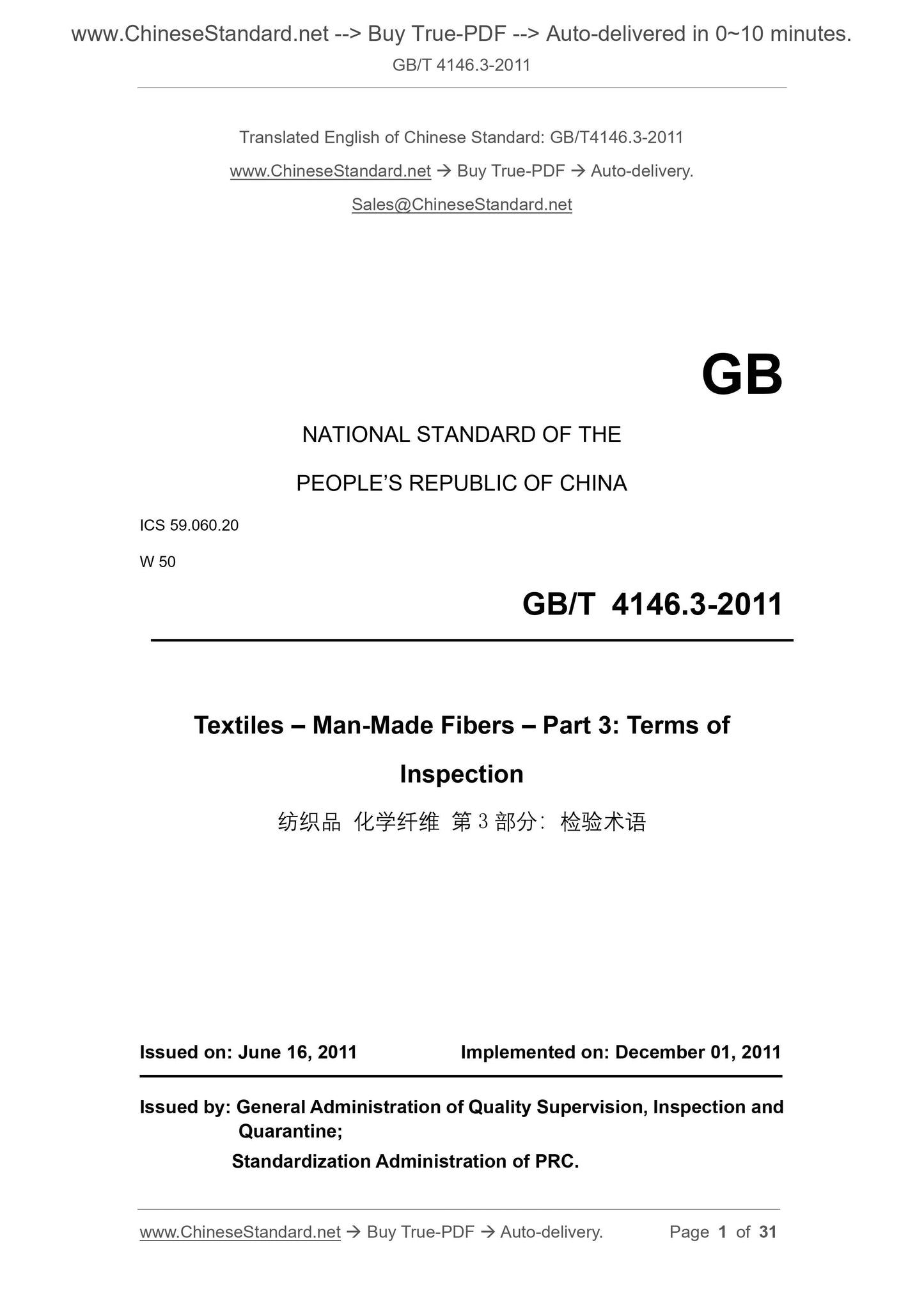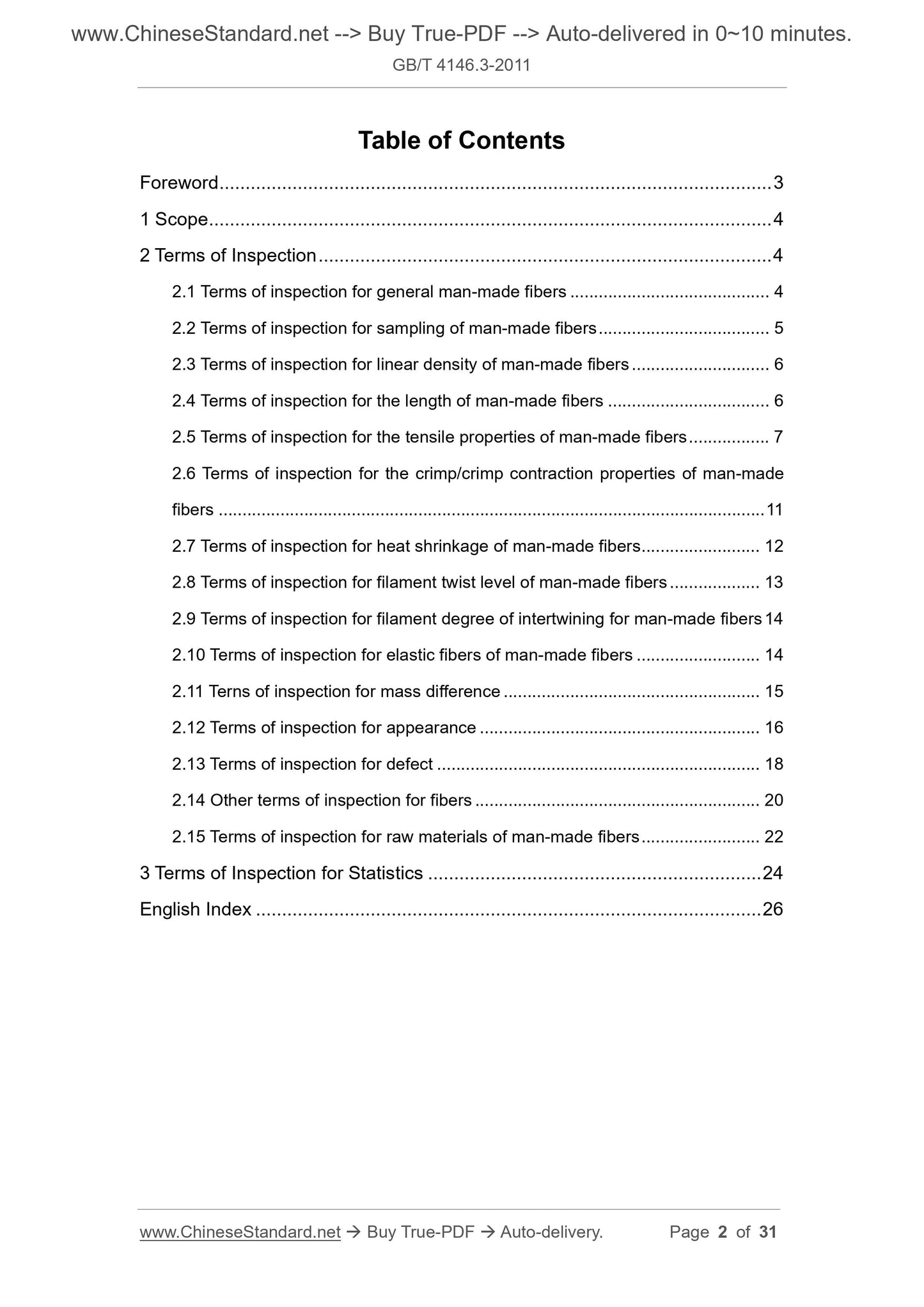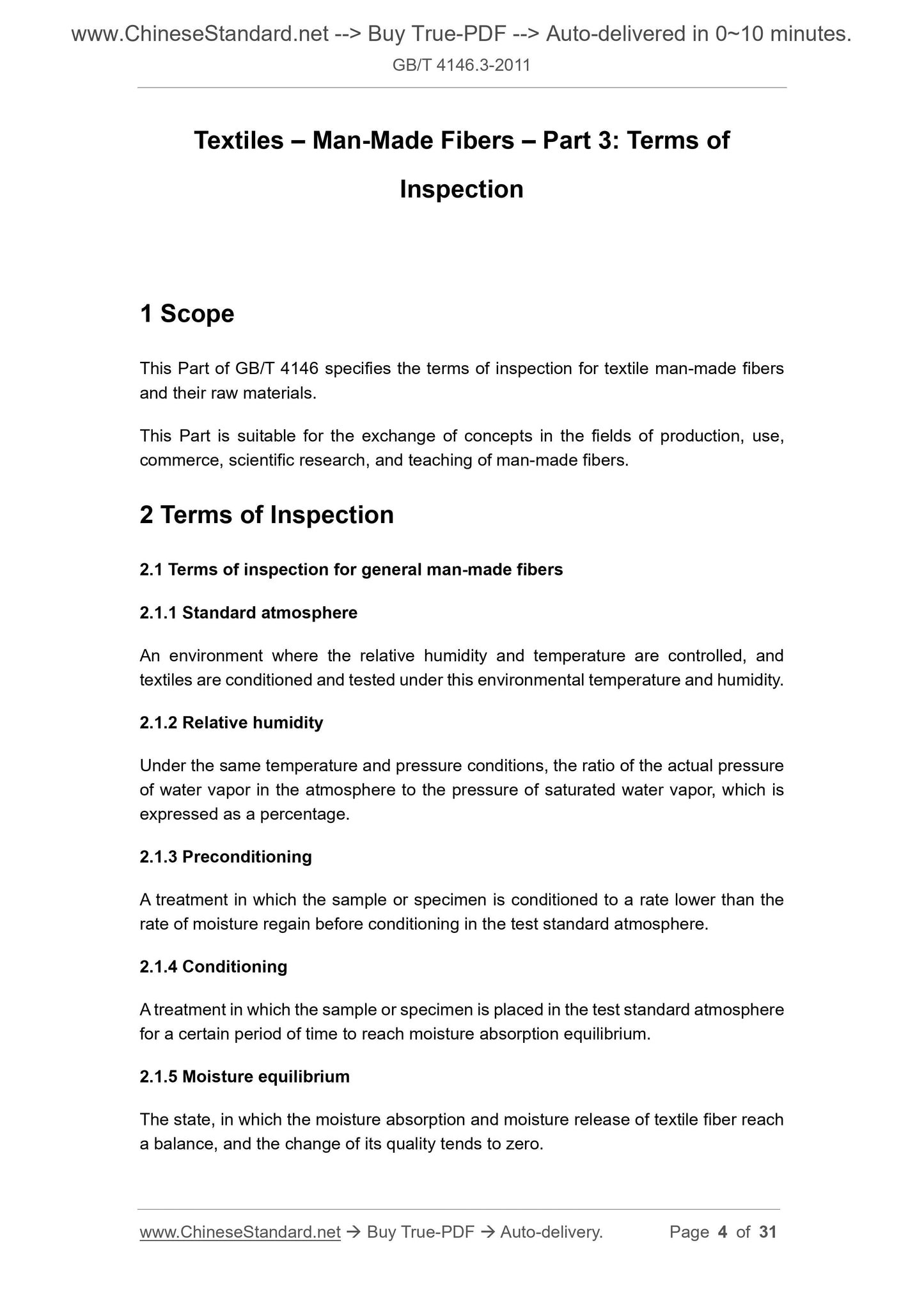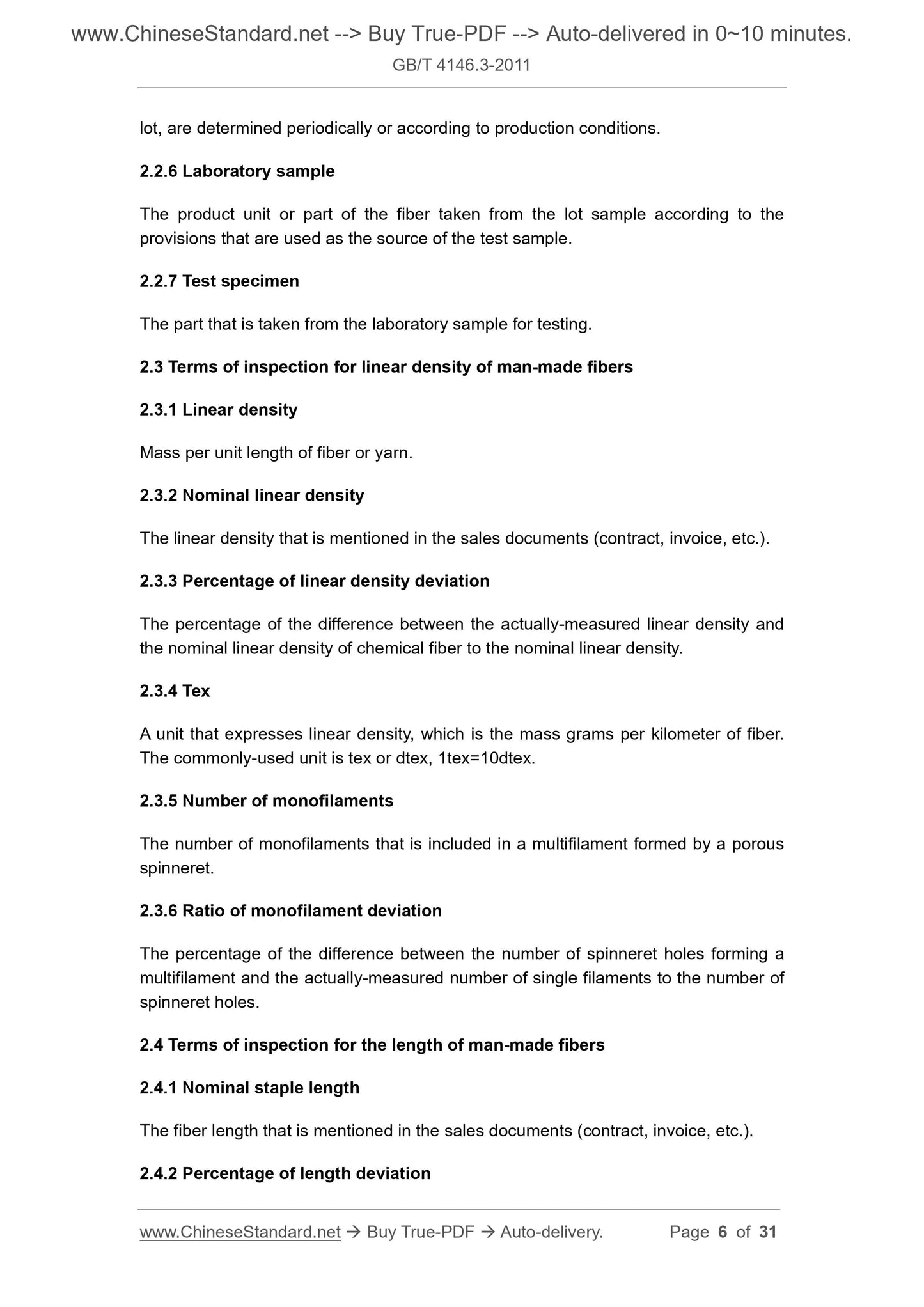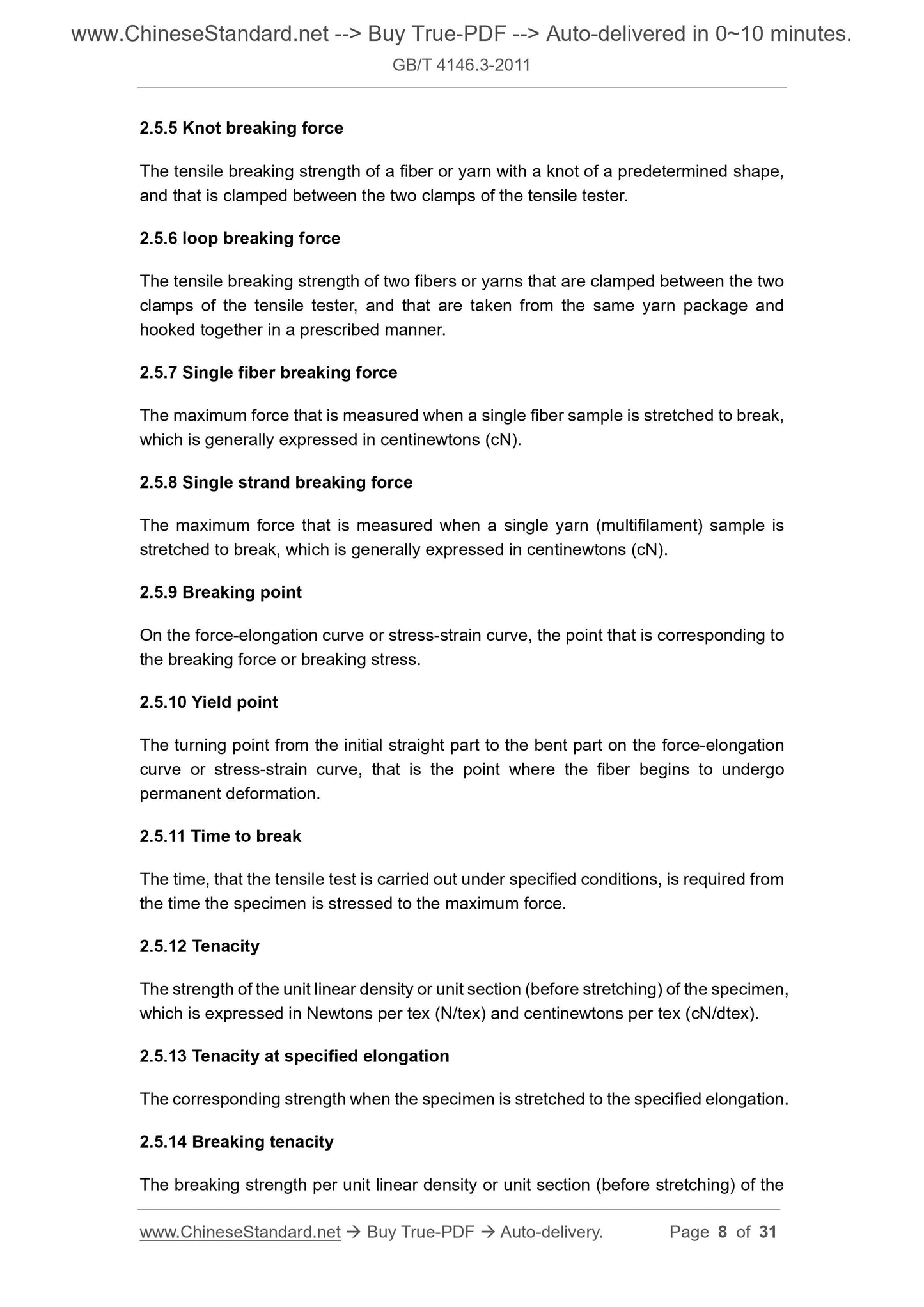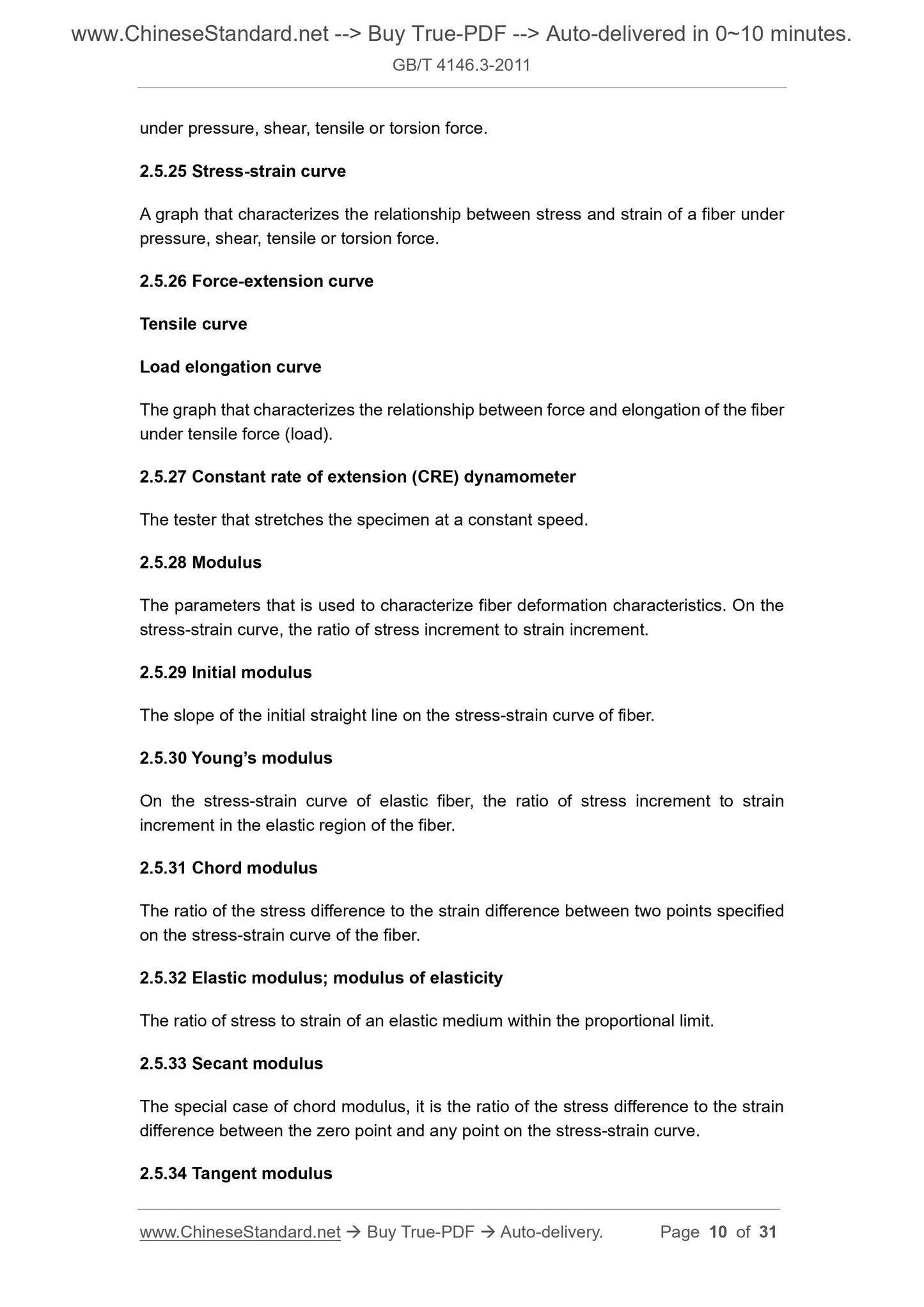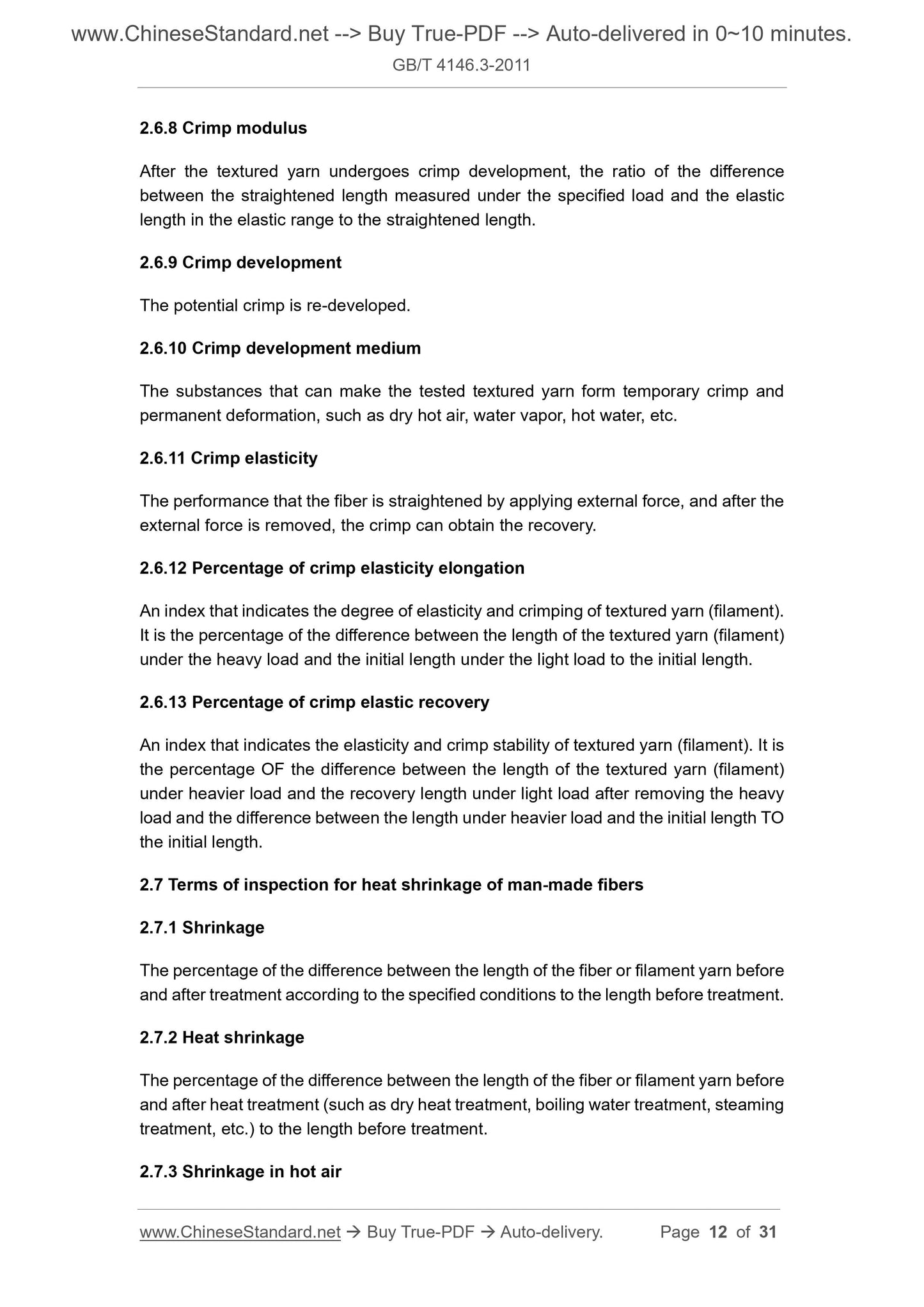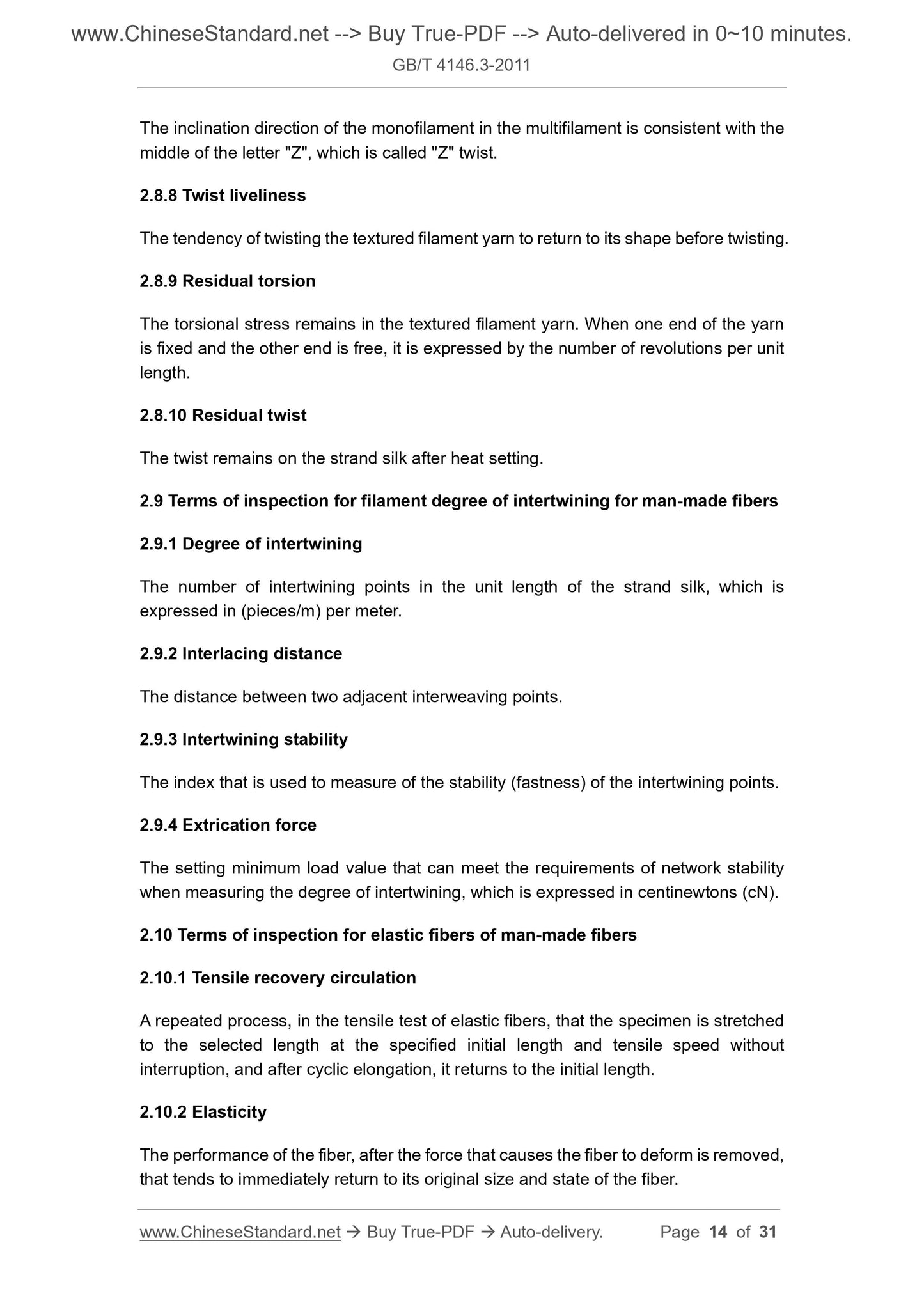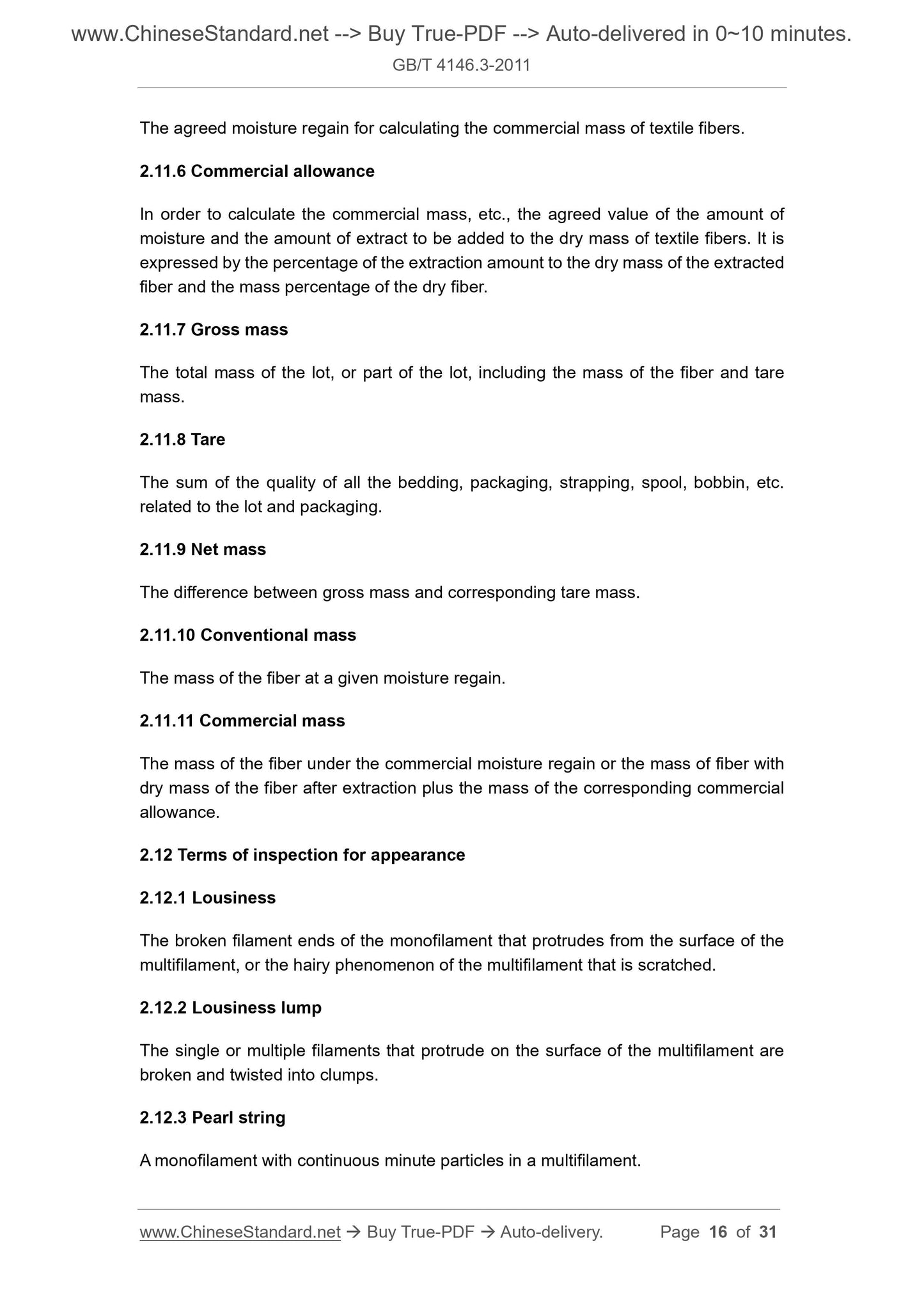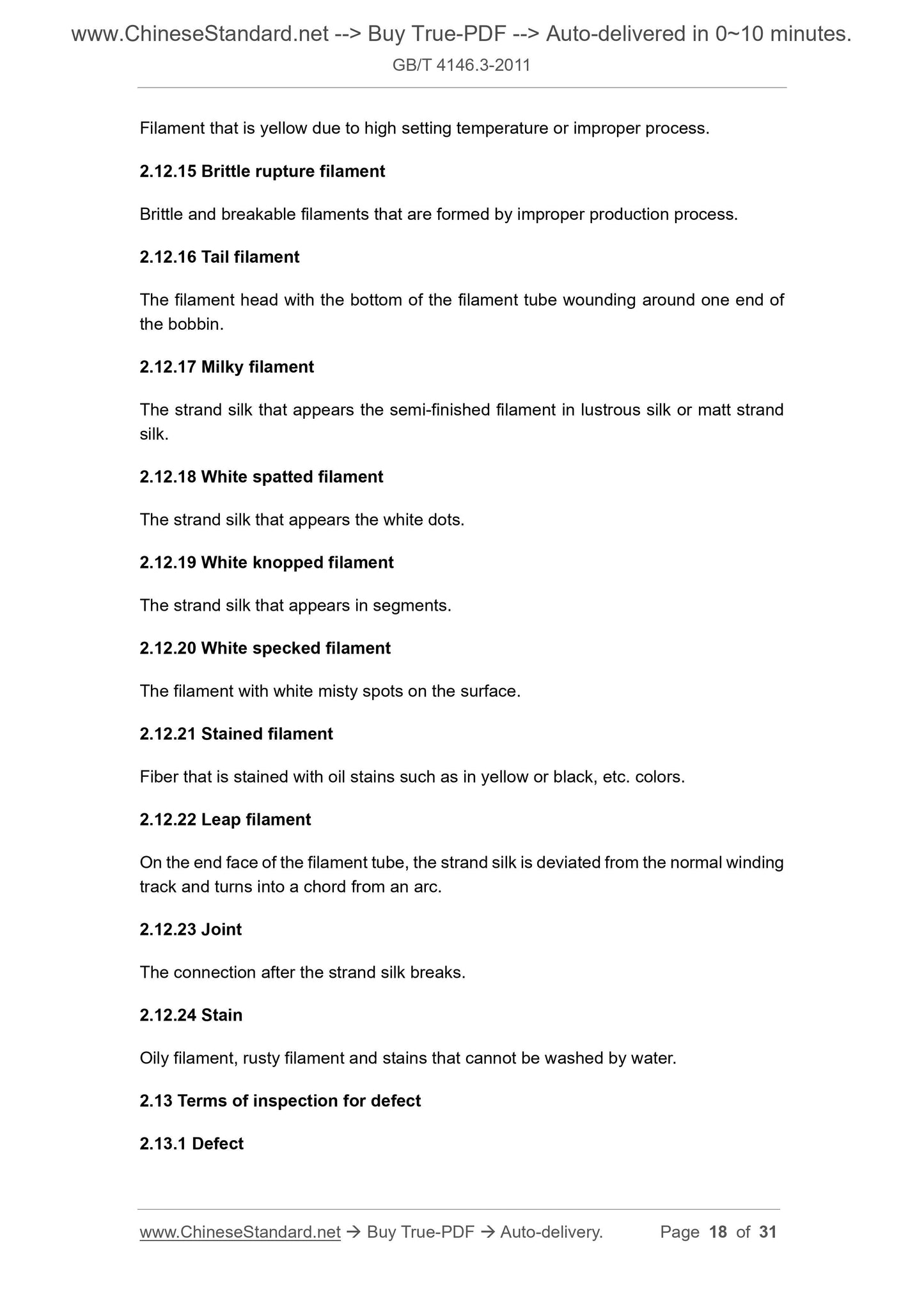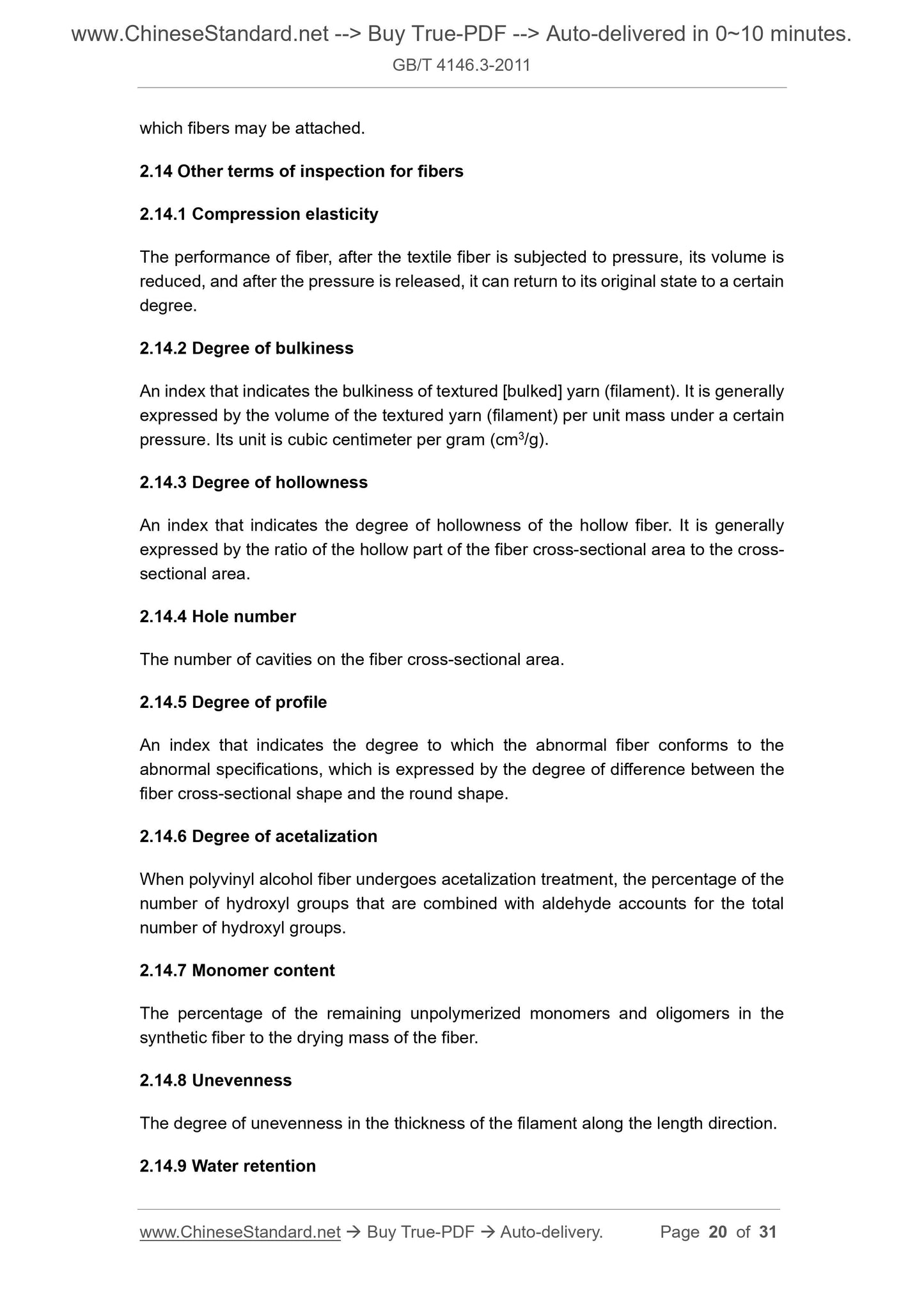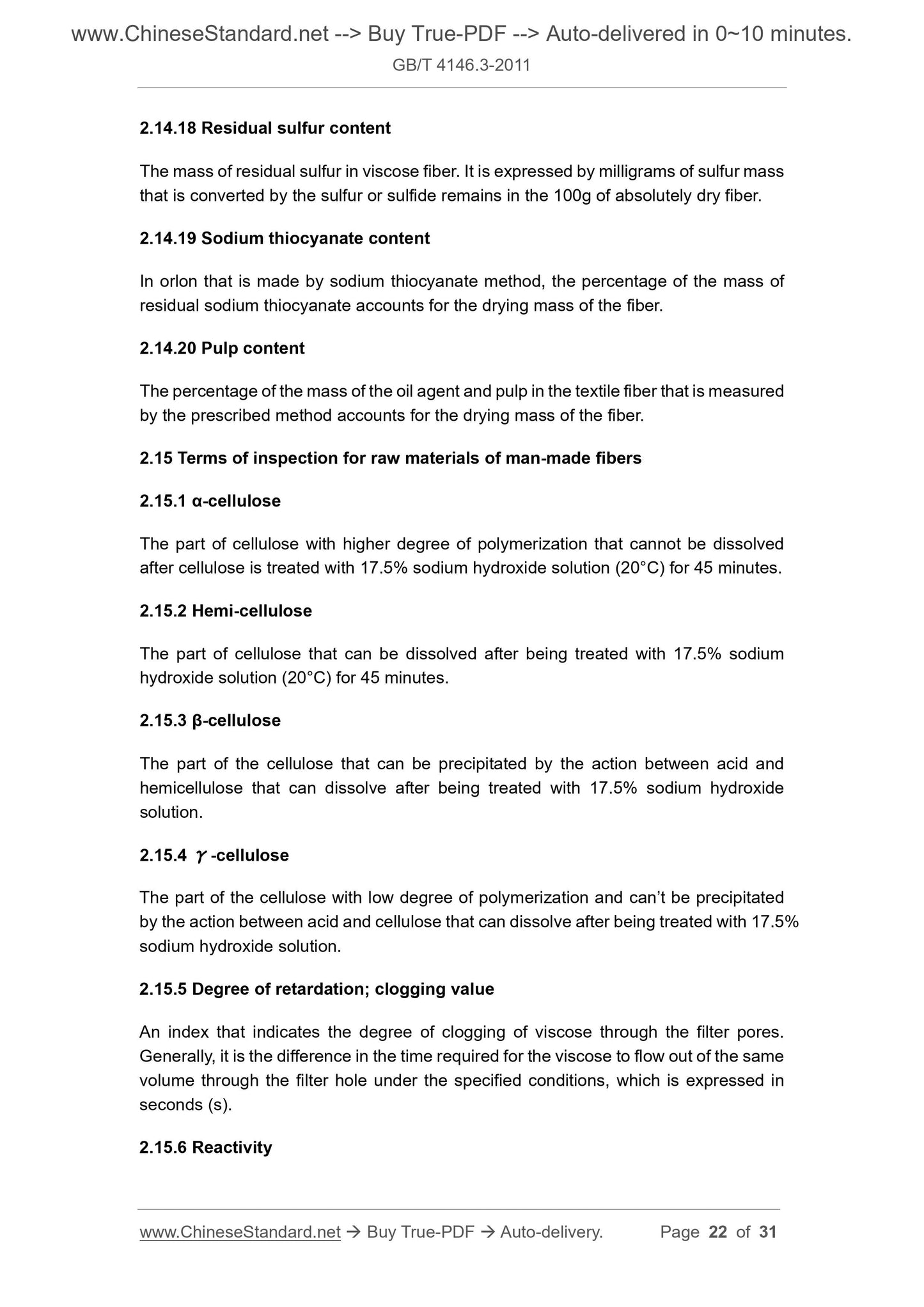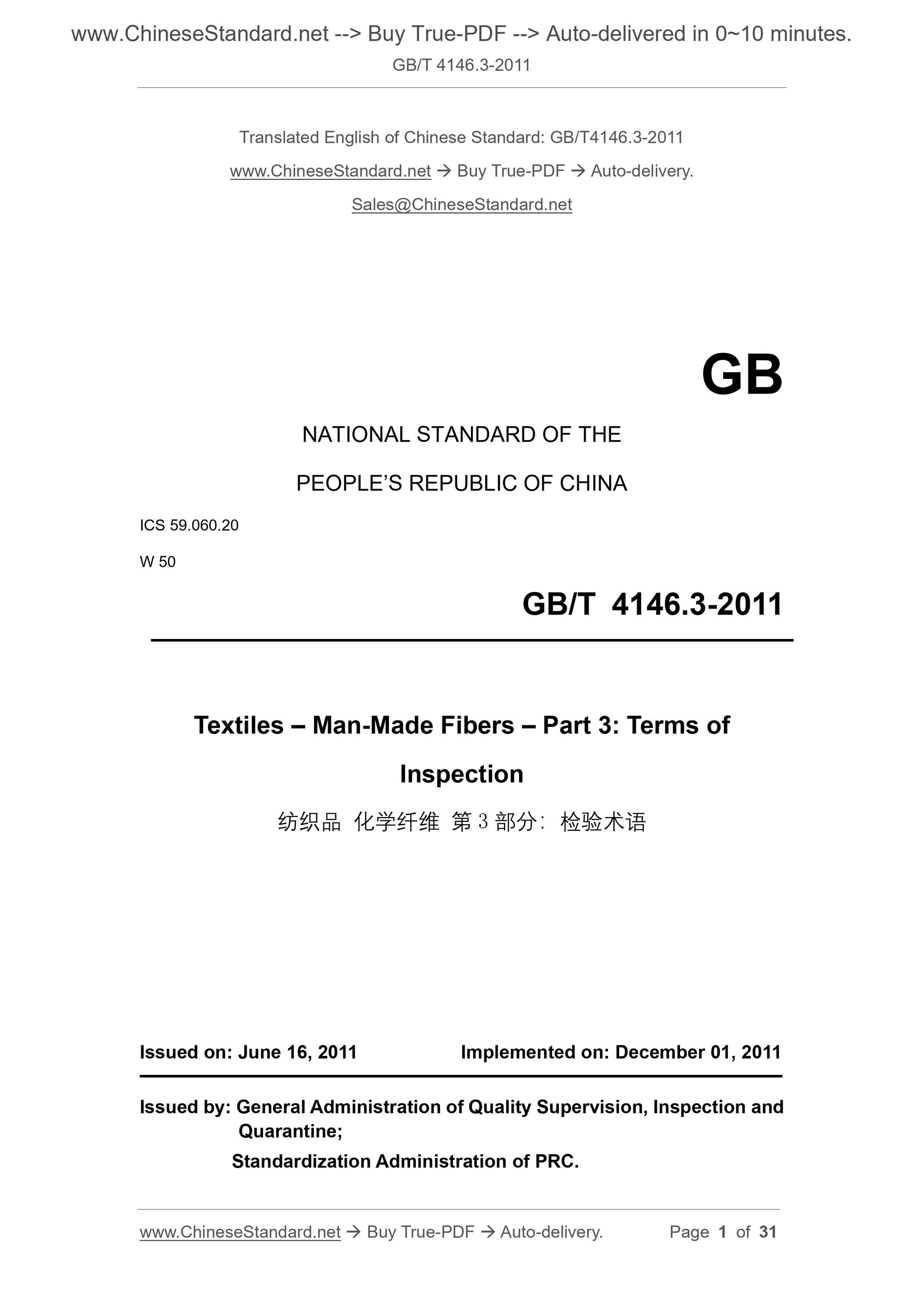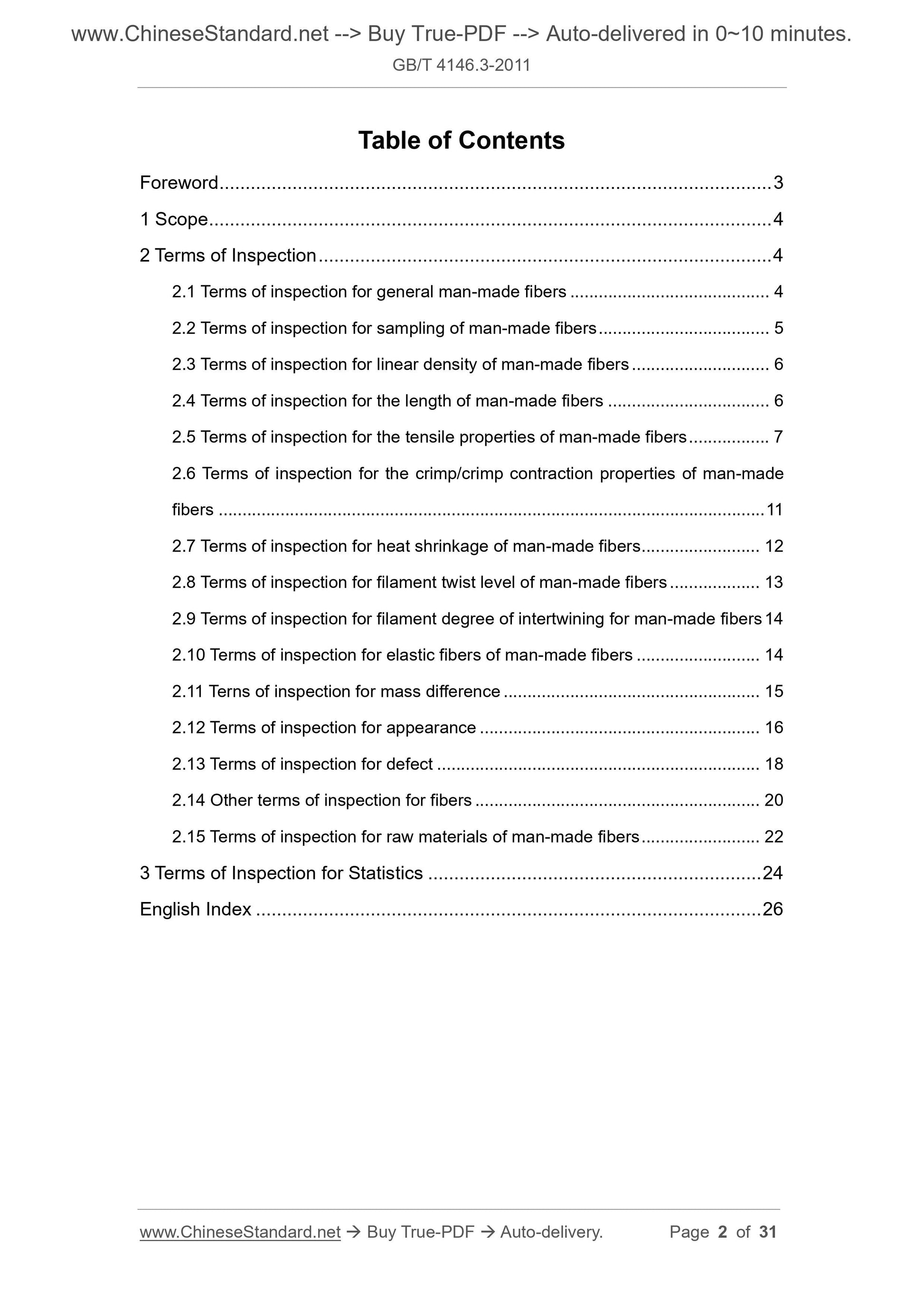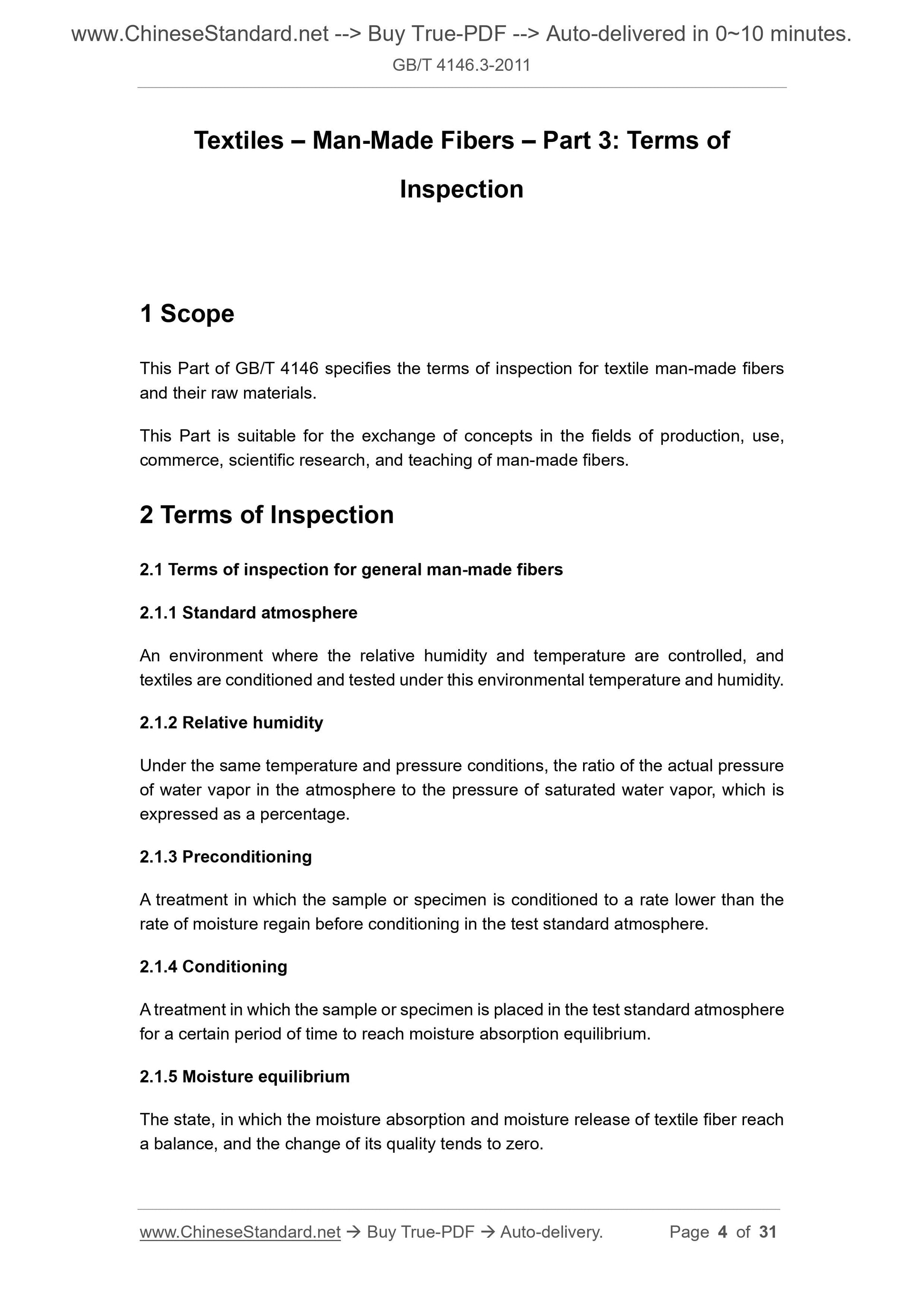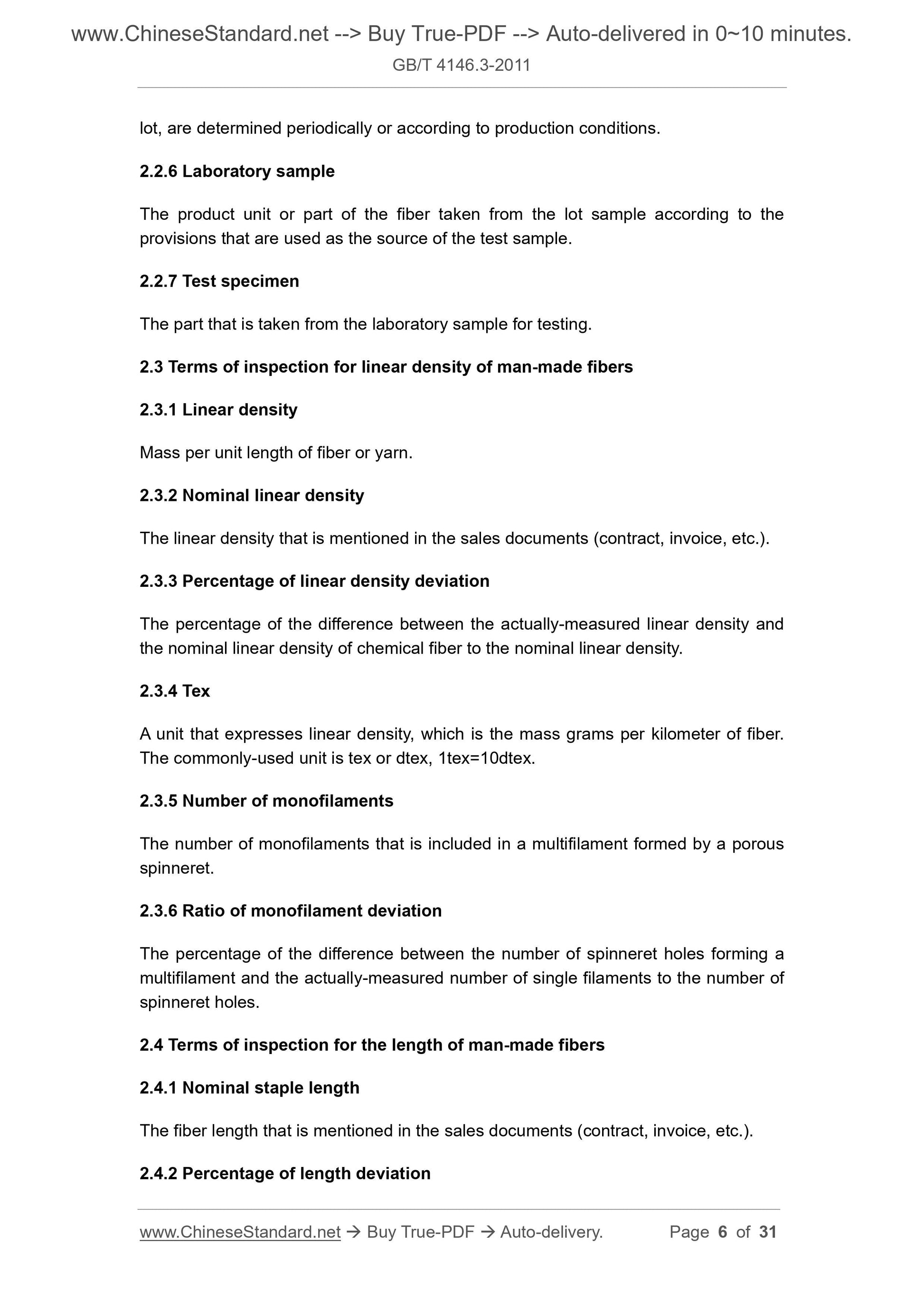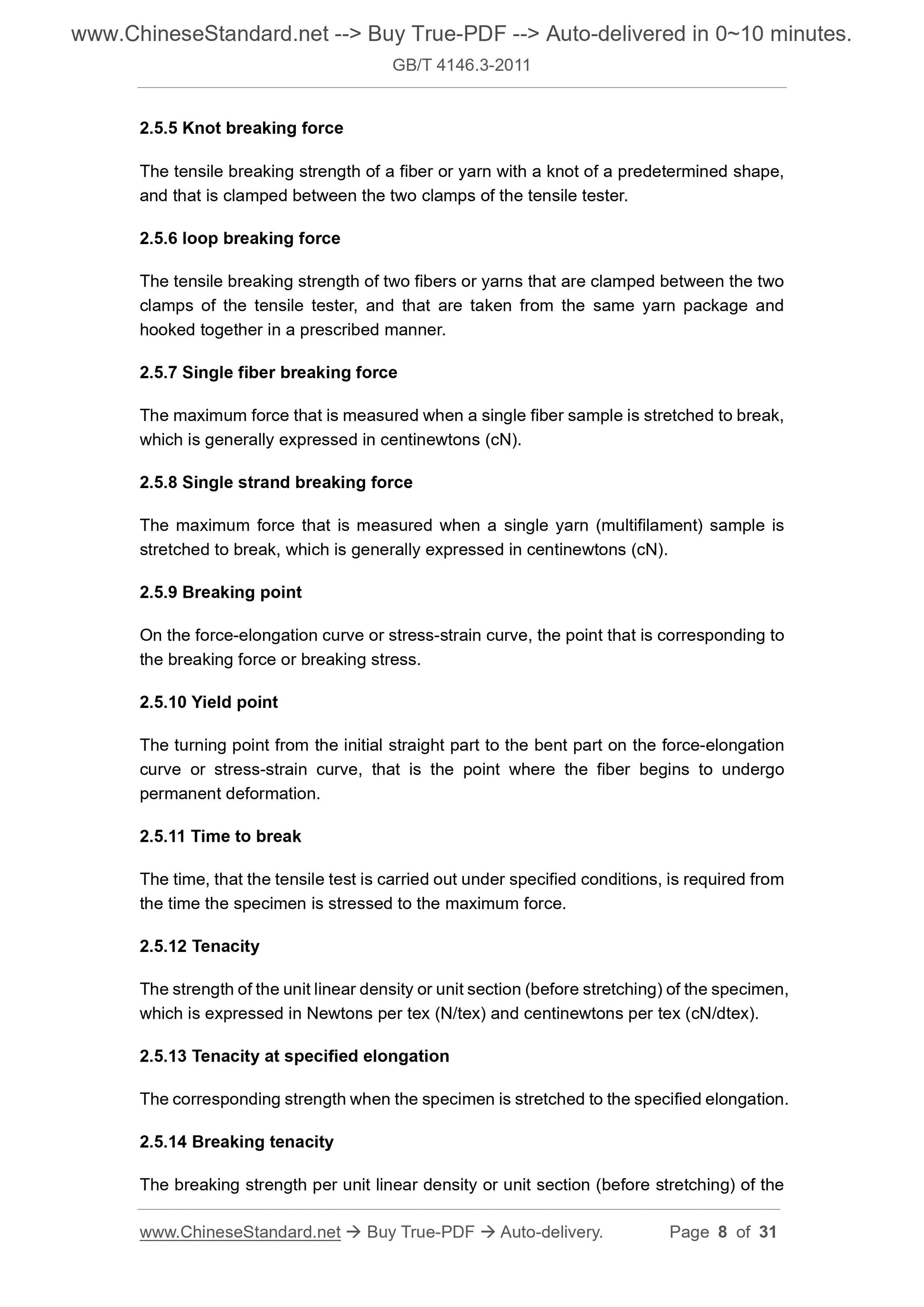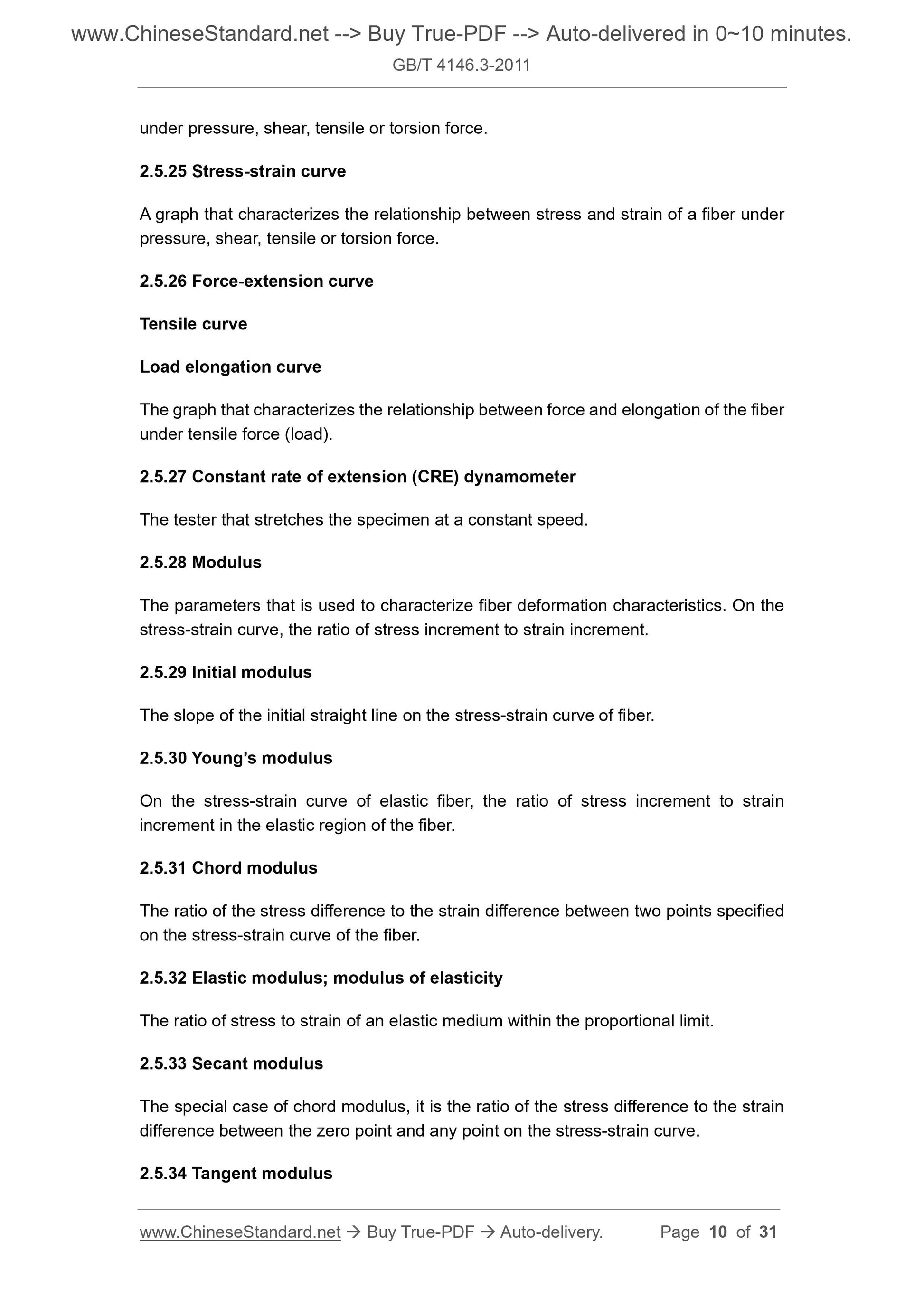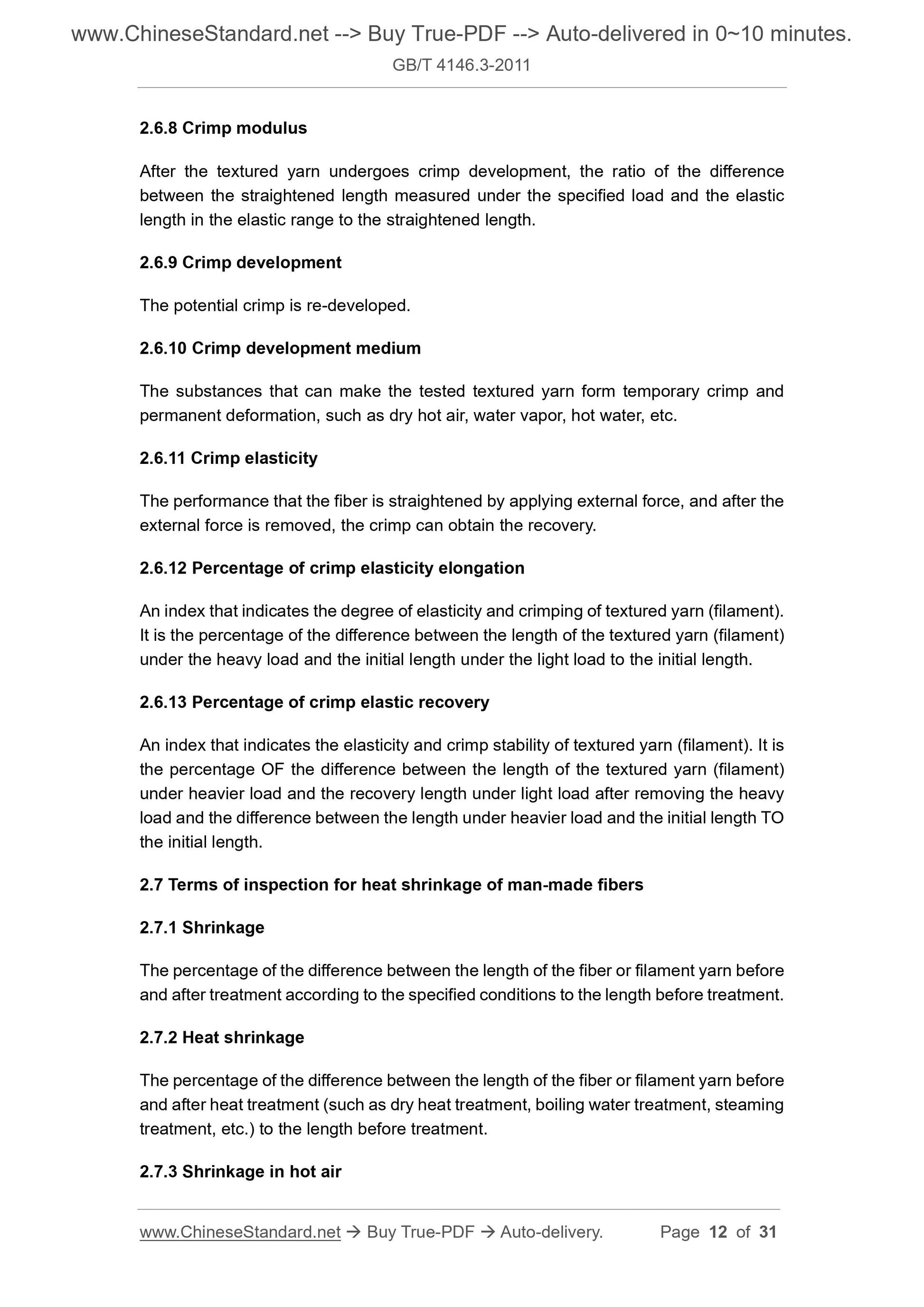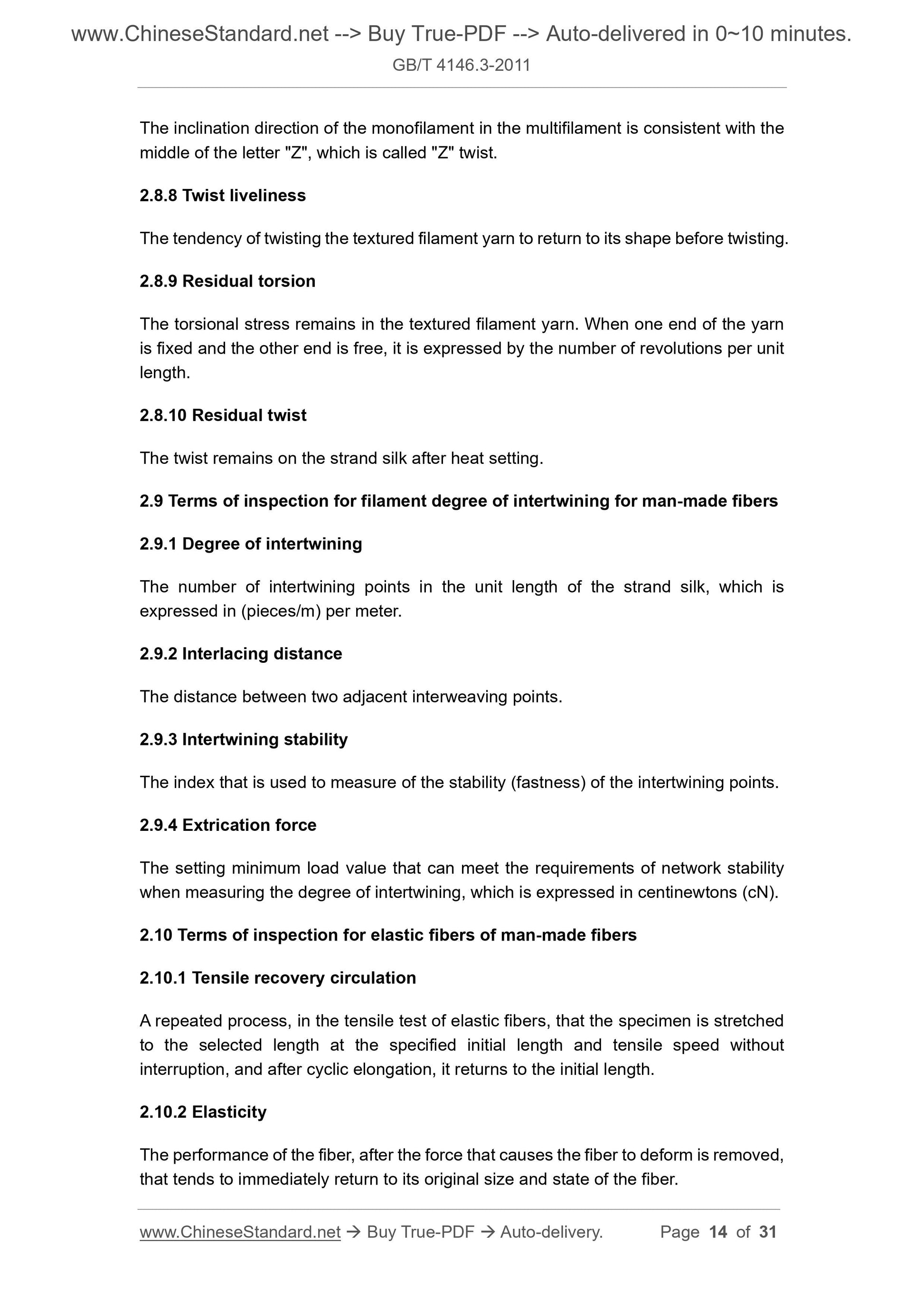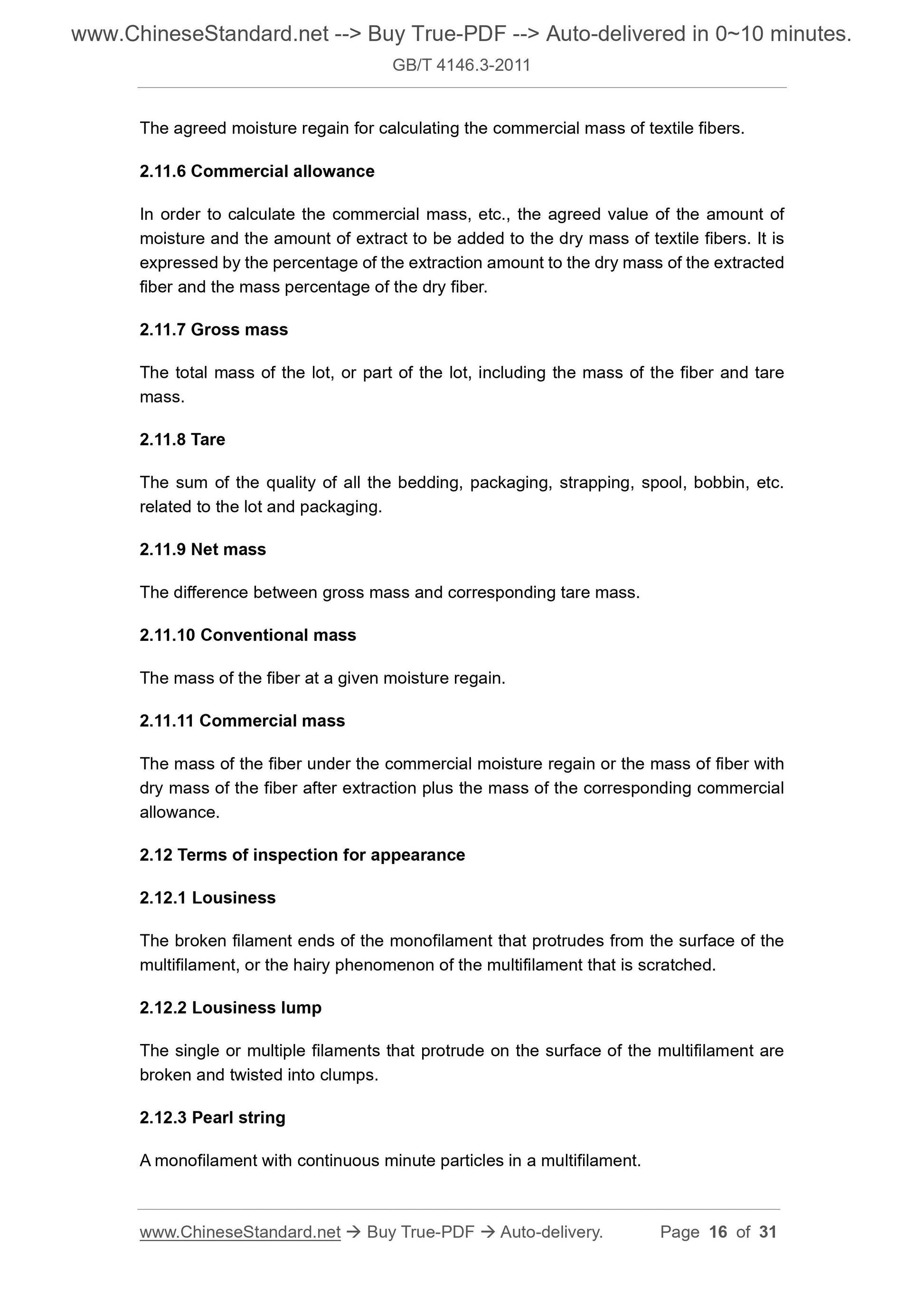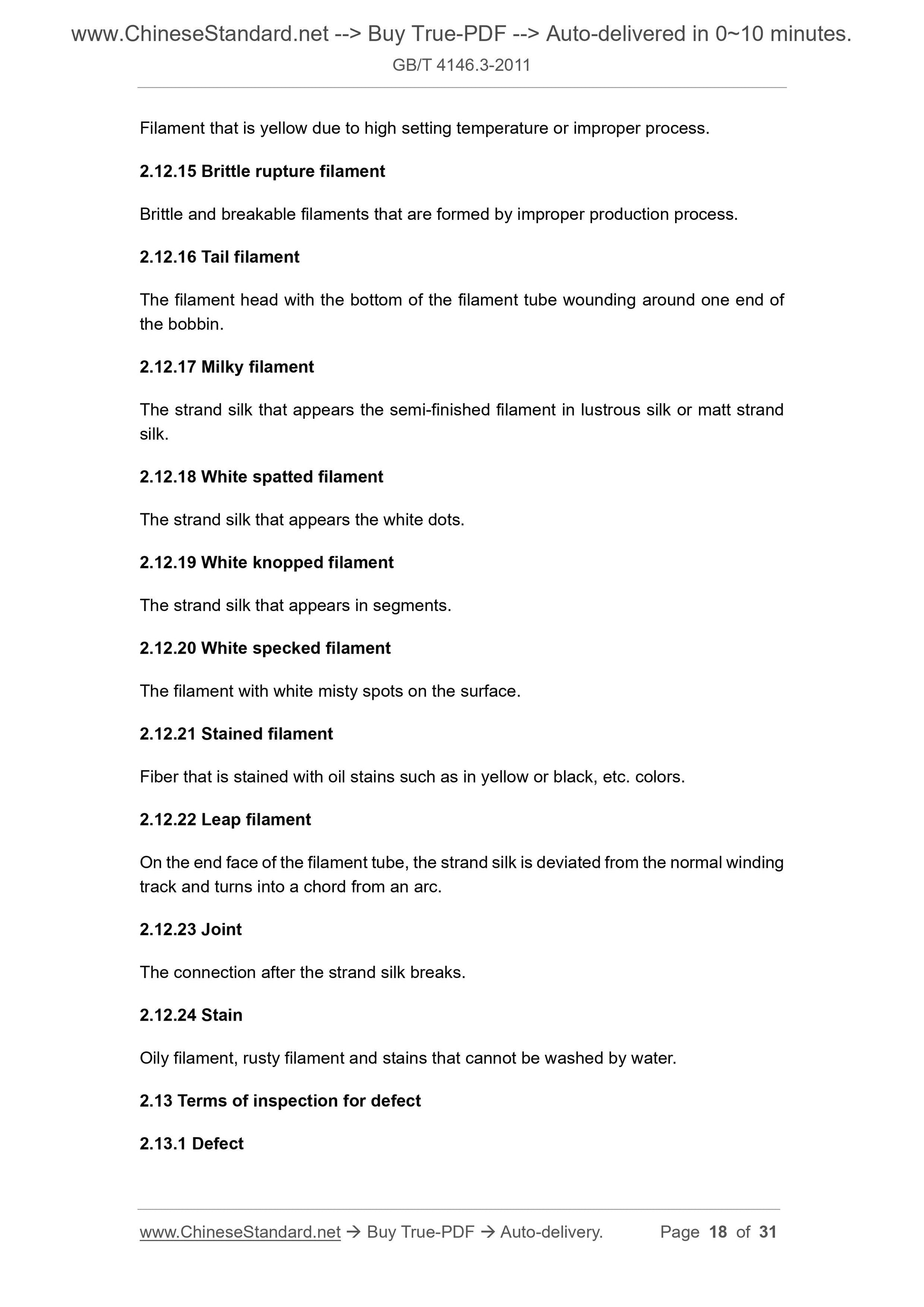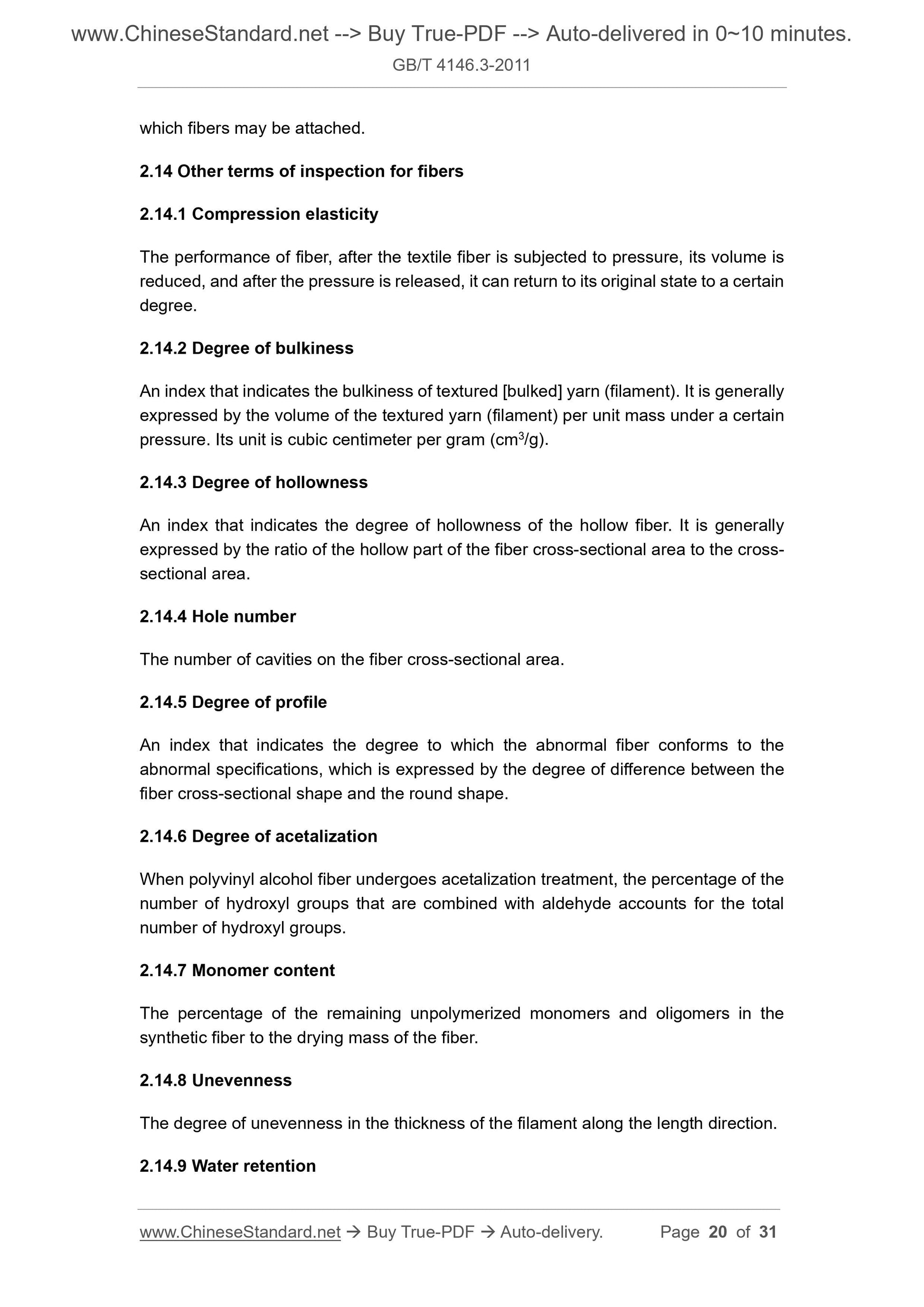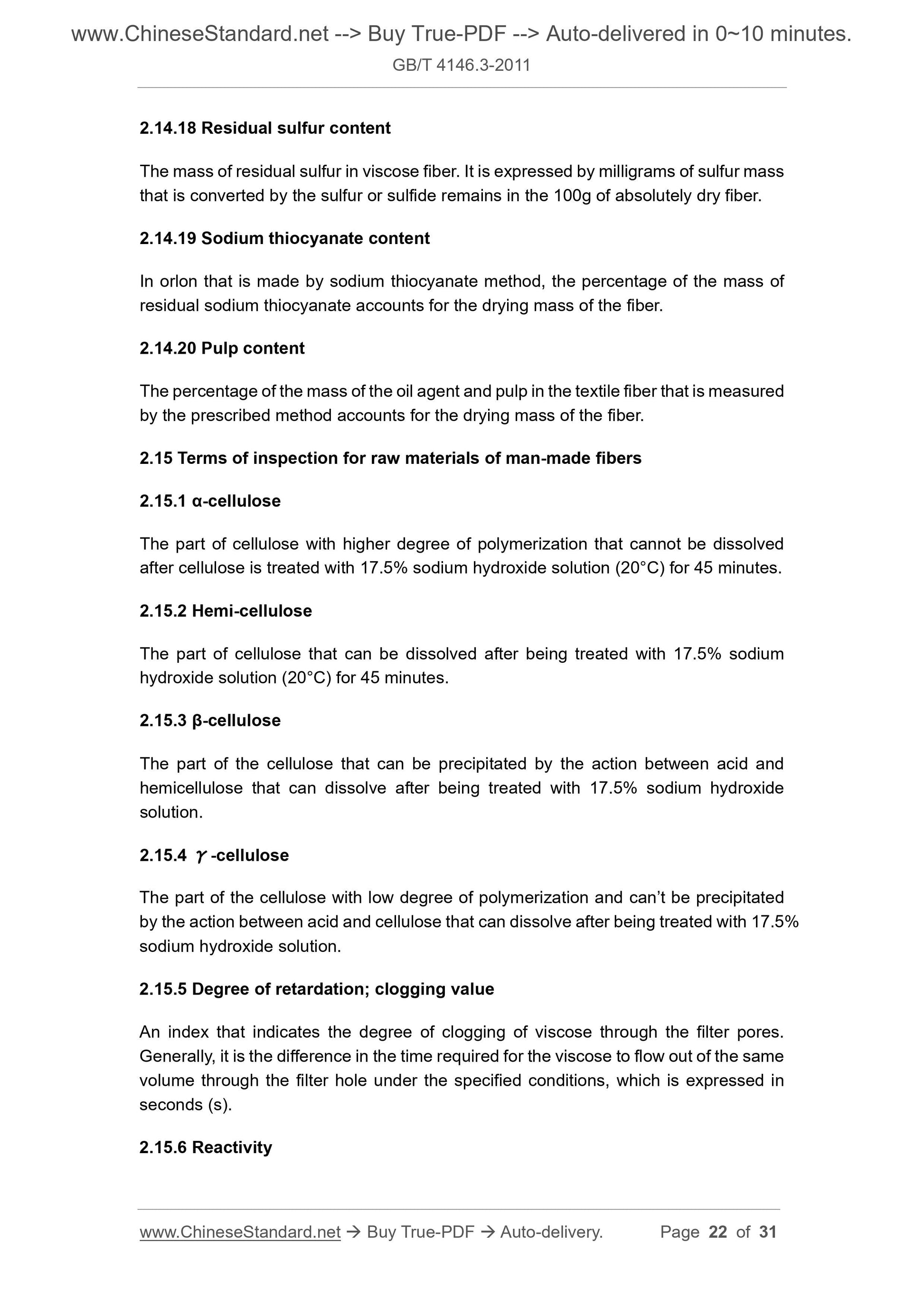1
/
of
12
www.ChineseStandard.us -- Field Test Asia Pte. Ltd.
GB/T 4146.3-2011 English PDF (GB/T4146.3-2011)
GB/T 4146.3-2011 English PDF (GB/T4146.3-2011)
Regular price
$165.00
Regular price
Sale price
$165.00
Unit price
/
per
Shipping calculated at checkout.
Couldn't load pickup availability
GB/T 4146.3-2011: Textiles - Man-Made Fibers - Part 3: Terms of Inspection
Delivery: 9 seconds. Download (and Email) true-PDF + Invoice.Get Quotation: Click GB/T 4146.3-2011 (Self-service in 1-minute)
Newer / historical versions: GB/T 4146.3-2011
Preview True-PDF
Scope
This Part of GB/T 4146 specifies the terms of inspection for textile man-made fibersand their raw materials.
This Part is suitable for the exchange of concepts in the fields of production, use,
commerce, scientific research, and teaching of man-made fibers.
Basic Data
| Standard ID | GB/T 4146.3-2011 (GB/T4146.3-2011) |
| Description (Translated English) | Textiles - Man-Made Fibers - Part 3: Terms of Inspection |
| Sector / Industry | National Standard (Recommended) |
| Classification of Chinese Standard | W50 |
| Classification of International Standard | 59.060.20 |
| Word Count Estimation | 31,384 |
| Date of Issue | 2011-06-16 |
| Date of Implementation | 2011-12-01 |
| Regulation (derived from) | Announcement of Newly Approved National Standards No. 9 of 2011 |
| Issuing agency(ies) | General Administration of Quality Supervision, Inspection and Quarantine of the People's Republic of China, Standardization Administration of the People's Republic of China |
| Summary | This standard specifies the textile and chemical fiber raw materials testing terminology. This section applies to chemical fiber production, use, trade, research, teaching concepts in areas such exchanges. |
Share
